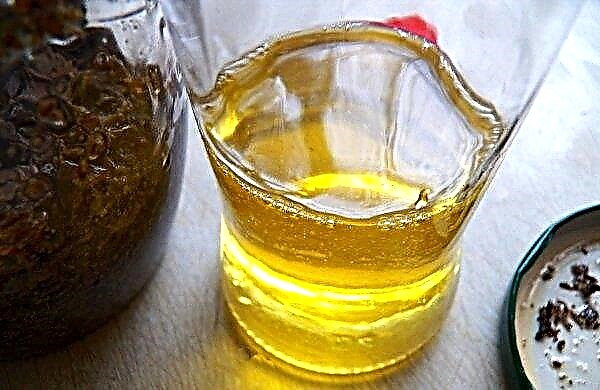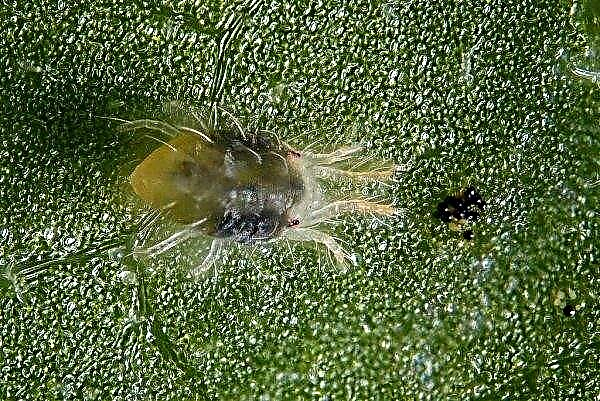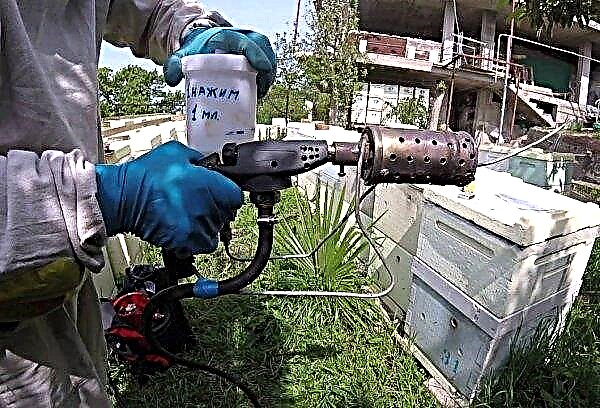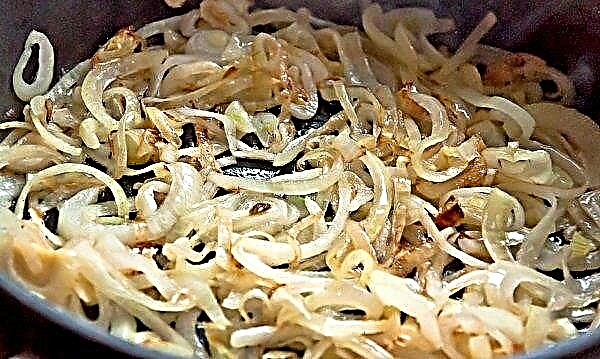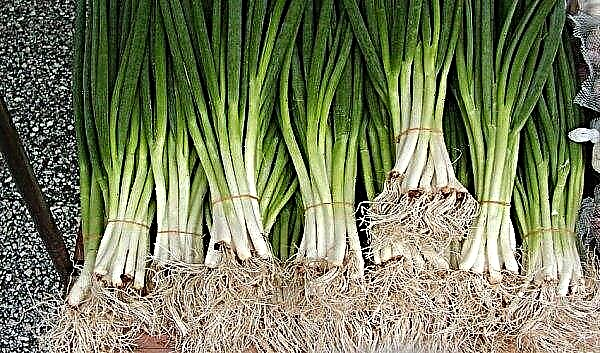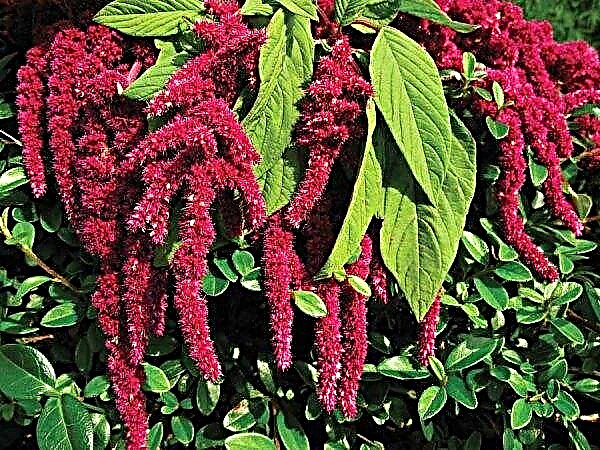Unfortunately, not all amateur growers are familiar with this amazing evergreen culture - dizigoteka. In order to breed such a plant at home, you need to listen to the valuable advice of those who already grow it, which means that the professional recommendations presented in this article will be just the way.
Botanical description of the plant
The elegantissima dizigote got into the house to a man from the tropical thickets of Polynesia and New Caledonia, where it can be found in the form of trees stretching upward for 8-9 m. The room version is much more compact (its maximum height is 1.5-2 m), and tree-like the plant still retains its form.
This evergreen perennial belongs to the Aralian family, whose representatives are distributed mainly on the islands of the Pacific Ocean.
Among its main characteristics are:
- a thin stem-stem covered with brown rough bark;
- few branches extending from the trunk;
- dark green leaves of a lanceolate form with serrated edges, which are collected mainly in the upper part of the crown;
- a red stripe in the center of the sheet plate, on which young specimens can be distinguished.
Important! The main decoration of the dizygote is called openwork leaves, which form an elegant crown. This compensates for the lack of flowering plants.
| Root system | Compact |
| Stem | Tree-like |
| Leaf shape | Lanceolate |
| Leaf color | Dark green |
| Flower shape | Umbrella |
| Flower color | Light coloured |
Main types
Within the group, several varieties of dizigoteki can be distinguished:
- elegant. A small tree reaches 2 m in height. It is also distinguished by 30 cm leaves on long petioles with serrated leaf plates.

Within this species, 3 varieties are distinguished: desigoteku Bianka, Castor, Gemini;
- Veicha. This variety is very similar to the previous one. The main difference is wider, but at the same time short oval leaves;
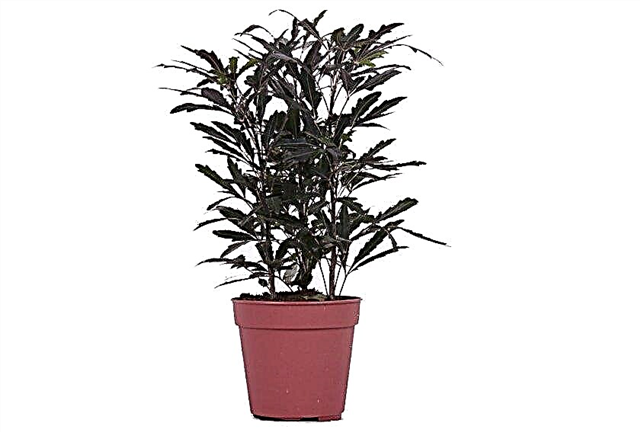
- Kerkhova. The dizigoteka has all the features of Veichi, but its leaves have a different shape and are tinted a little lighter;
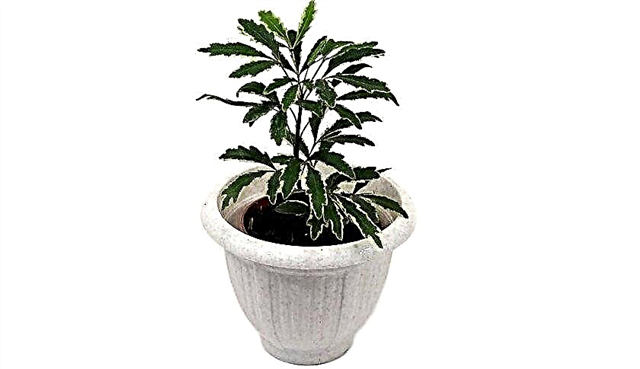
- Gracillima. The lowest among congeners; the edges of wide leaves are wavy, the color is pale.

Did you know? Dizigoteku can hardly be called a popular plant, but it has more famous relatives (for example, ginseng).
Conditions for successful growing at home
Elegant dizigoteka - a plant not suitable for a beginner grower. Given its exotic origin, it requires special conditions in temperature and humidity, which are difficult to achieve at home.
Location
In the natural environment, the flower lives in tropical forests, where direct sunlight does not reach, therefore, a dizigoteka needs diffused lighting. It is especially important to ensure that at lunchtime, when the heat is at its peak, the pot with the plant is in the shade, where it is not threatened by sunburn.
Most often, such conditions are ensured by the placement of dizigotiki on the eastern and western windowsills, but the north side may come up.
There are some peculiarities in the content of the flower in the summer: when it’s warm, you can take the pot out into the shade to fresh air. But in winter, when there is not enough natural light, and the temperature drops below +18 ° C, additional lighting with electric devices will not interfere.
Temperature
As for the temperature regime, there are a number of their features:
- in summer, the plant loves heat - + 22 ... 27 ° C;
- in winter, a maximum temperature drop to +15 ° C is permissible;
- in transition periods (spring / autumn) it can fluctuate within + 18 ... 20 ° С;
- Do not place a dizigoteka near heating appliances;
- sharp changes in temperature negatively affect flower development;
- protect the plant from drafts, otherwise it may fall leaves, it is necessary.
Important! A dizigoteka feels best in a winter garden, where the temperature and humidity necessary for its comfort are maintained.
Air humidity
Another important factor in providing a suitable environment for the plant is humidity.
In the European climate, it is difficult to achieve indicators of tropical forests, so additional methods will come to the rescue:
- regular spraying with warm boiled or distilled water;
- accommodation in the florarium;
- the use of a pallet with wet pebbles or expanded clay, where you can put a pot;
- fixing the flower pot over the water: fill the vessel with a shallow (up to 3-5 cm), but spacious (at least 25-30 cm in diameter) vessel, and pour pebbles in the center of it. Here and lower the pot.
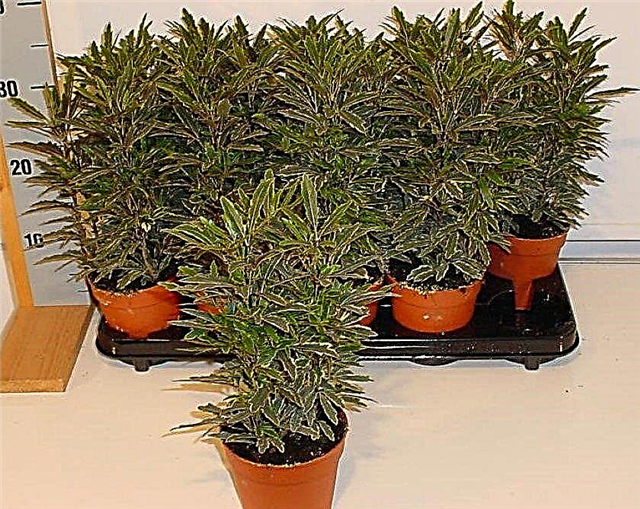
Home Care
Having arranged a comfortable place for a dizigoteka, you need to take care of the proper care of it.
Watering
As in the case of spraying, rain, distilled, boiled or, in extreme cases, settled water at room temperature is used to moisten the soil.
Watering the plants is carried out by irrigation under the root. In spring and summer, the procedure is required as soon as the topsoil dries up (approximately every 3-4 days). In winter, water enough once every 1.5-2 weeks. Liquid must not stagnate in the water collection pan, as this is fraught with the formation of root rot.
Did you know? The main supplier of dizigoteks today are the Netherlands.
Top dressing
The flower loves liquid fertilizers in the spring-summer growing season. At this time, once every 2 weeks, organic or universal complex fertilizers for indoor plants will not interfere with fertilizing (they include “Clean Leaf”, “Stimovit”, “Agrecol”). In autumn and winter, this is not worth doing so as not to disturb the dizygote at rest.
Pruning
The flower grows rather slowly. The crown is quite liquid, therefore, the dizigoteka does not need to trim or form a bush. To give the plant splendor, they plant several copies in one pot.
In the case of old plants, pruning is still sometimes carried out, but only with the aim of rejuvenating the bush and provoking the growth of new shoots.
Video: Caring for a dizigoteka at home
Transfer
Due to the slow growth of the dizigoteki, it is enough to transplant it every two years in the spring.
The first step in the pot is to place a drainage of expanded clay or small stones. Then take care of the soil.Important! For transplantation, a standard ceramic pot is suitable, the lower diameter of which is equal to the upper. It is necessary to pay attention to the presence of holes for the outflow of water.
As a substrate for dizigotki take slightly acidic soil in the following proportions:
- 1 part humus;
- 1 - sand;
- 2 parts of turf land.
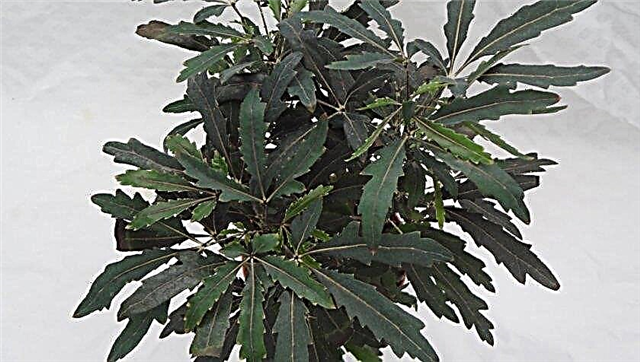
Breeding
There are two ways to propagate the dysygote of elegantissima: cuttings and seeds.
Important! When working with a dizigoteka, be sure to wear gloves, since all parts of the plant are poisonous.
Cuttings
The procedure includes several stages:
- Separated shoots are first treated with growth stimulants ("Kornevin", "Zircon").
- Plant them in a mixture of sand and peat.
- A container with a seedling is covered with a bag or film so that the temperature is maintained at +21 ° C and above.
- Periodically, it is worth spraying and ventilating the "greenhouse".
- When the shoot takes root, you can remove the coating and lower the temperature.
- A young plant is transplanted into a small pot (with a diameter of 7-9 cm) if it is braided by a lump of substrate with roots.
- It remains to rearrange the flower in a bright place where the temperature is + 14 ... 16 ° С.

Seeds
Growing a dizigoteka from seeds is much more difficult.
We recommend that you familiarize yourself with other decorative and deciduous indoor plants:
To do this, you must:
- In January-February, soak the seeds in a solution of "Zircon" or "Epina" for disinfection according to the instructions.
- You can plant planting material in a mixture of turf, hardwood and sand in equal parts to a depth of 0.5 cm.
- After the seeds are planted, the earth is sprayed from the spray gun and the pot is placed in a warm place, where the temperature is + 20 ... 24 ° С.
- Before seedlings appear, the sown soil is periodically sprayed and aired.
- When 2-3 leaves appear on the seedlings, they are dived into small pots, the temperature is reduced to + 18 ... 19 ° С.
- When the sprouts completely braid from the inside of the flowerpot, they can be transplanted into large (10-12 cm in diameter) pots, reduce the degree to 14-15.
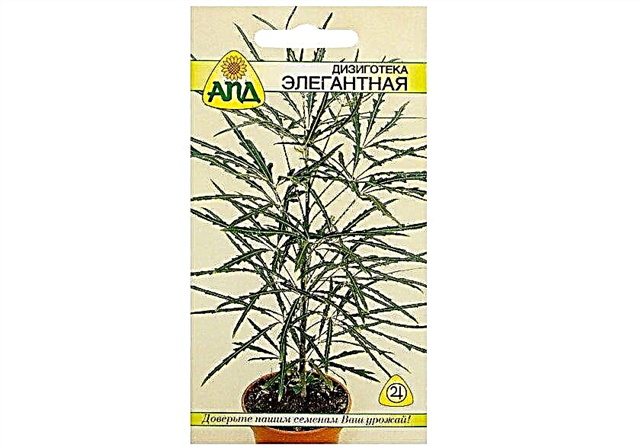
Growing difficulties
With improper care or uncomfortable living conditions, a dizigoteca can experience various problems that slow its growth and can lead to death.
Disease
This plant does not suffer from diseases typical of indoor flowers, it has its own characteristic "weaknesses":
- if the leaves are dry, then the problem may be in the temperature regime of the room, the presence of drafts, dry air. It is necessary to check whether the plant is blowing from one side, increase the frequency of spraying, or move the dizigoteka to a warmer room;
- when rotting rootsThis is due to excessive watering. Having cut off the affected areas, treated with charcoal so that the rot does not spread to healthy ones, letting the flower dry for a week or two before the next watering, you can save the plant. In the future, it is better to reduce the amount of fluid for regular watering;
Did you know? From Greek, “dizigoteka” is translated as “two zygotes”. This name arose thanks to the original form of the anther - in the form of double nests.
- a plant can crumble lower leavesif he doesn't have enough light. If a similar problem occurs, it is necessary to transfer the dizigoteka to a lighter room (or compensate for the lack of natural light with artificial light);
- light or brown spots indicate sunburn. In such cases, it is better to shade the plant;
- if wither leaves, therefore, it is necessary to reduce the amount of liquid during watering;
- white marks on leaf plates indicate irrigation with hard water. The only way out is to use distilled or rainwater;
- if dizigoteka does not grow for a long time, produces only small leaves, the plant suffers from a lack of fertilizer. Increasing the number of fertilizers will correct the situation.

Pests
Pest can attack a dizigoteku:
- scale shield;
- spider mite;
- thrips.
Dizigotiki remarkable appearance. Indoor plants bloom extremely rarely, but enough beautiful openwork leaves that attract the eye with their unusual shape. This flower is very demanding in terms of creating suitable conditions and proper care. This should be taken into account for those who want to acquire this plant at home.









